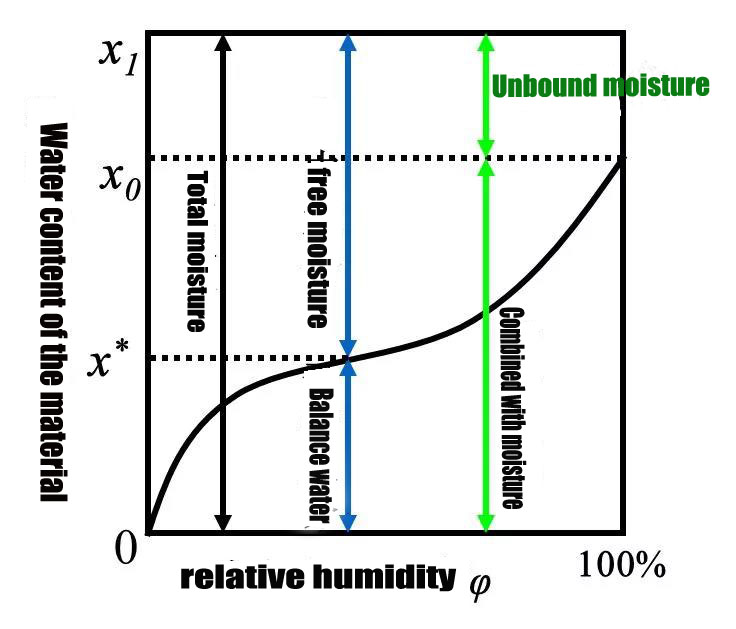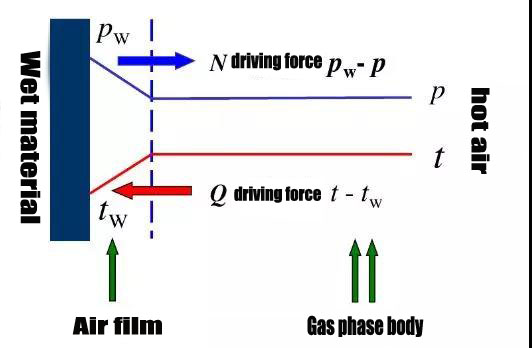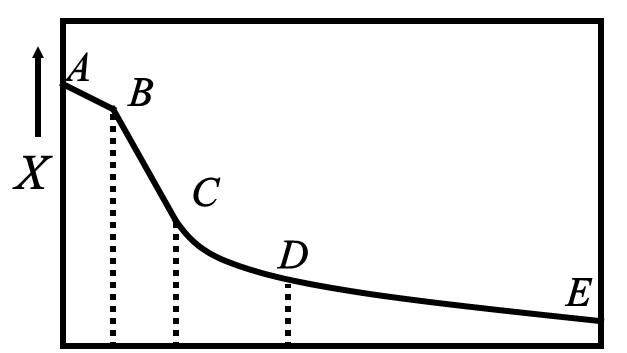The wet coating drying basic process of Lithium battery pole piece
Source:
|
Author:pmo55805a
|
Published time: 2018-08-20
|
1484 Views
|
Share:
The lithium battery electrode is a coating with composed of particles. During electrode preparation, a uniform wet slurry is applied to the metal current collector, and then the solvent in the wet coating is removed by drying. The drying process and coating process of the lithium ion battery pole piece are independent and related to each other; the nature of the coating affects the design and operation of the drying process; the coating speed, the thickness of the coating determines the drying time;The coating with a leveling process during the drying process, which affects the uniformity of the coating. Therefore, whether the coating can accurately use the optimal coating and drying process during the design process balances the relationship between the two and ultimately affects the overall technical performance of the coating.
Pole drying method
(1) Far infrared radiation is dry. Thermal energy is radiated to the surface of the dried object by a far-infrared emitting element, and the liquid is vaporized and evaporated for drying.
(2) The double-sided air supply floats and floats. Floating and drying is a special design of the air nozzle on both sides of the dry foil. The airflow sent by the high-speed jet is applied to the dry foil under the action of the air-flow wall-attaching effect. Under the action of the airflow, the dried sheet is Dry in a floating state.
(3) Conventional convection hot air drying. Convection drying is a relatively traditional drying technique. The heated dry air is sent to the drying tunnel, and the heat energy in the dry air is conducted to the object to be dried by convection of the air, and the liquid is vaporized and evaporated for drying.
(4) Cyclic hot air impact drying. Efficient drying technology developed by using the principle of air jet fluid mechanics. The dry air is sprayed to the surface of the object to be dried at a high speed through a specially designed tuyère, and the dry static air layer is prevented from being damaged by the impact on the surface of the dried object, thereby accelerating the drying process and greatly improving the drying efficiency.
(5) Superheated steam drying. The superheated vapor is a vapor obtained by heating the liquid to a saturated vapor which is completely evaporated, and then continuing to heat.
(6) Microwave drying. Microwave drying is a method in which the material is heated and heated by microwave energy having a frequency of 915-2450 MHZ to evaporate water for drying.
Water classification in materials


The relationship between total moisture, Balance moisture, free moisture, combined moisture, and unbound water of the material is shown in the above figure.
Basic principle of drying
Drying: An operation in which moisture or other solvent is vaporized by heating, and the generated vapor is removed, thereby removing moisture in the solid material.

As shown in the figure above, the water vaporizes on the surface of the material, and there is a gas film near the surface. The partial pressure of water vapor in the film is equal to the vapor pressure of the water in the material. The mass transfer driving force of the water in the gas phase is the difference between the vapor pressure of the gas film and the partial pressure of water vapor in the gas phase main body. At the same time, the hot air heats the material to heat, and transfers the heat to the wet material. The driving force is the temperature gradient of the hot air and the material; for the convection drying, due to the continuous flow of the medium, the vaporized water is taken away, thereby forming a partial pressure difference.
Drying dynamics
Drying curve: The relationship between the moisture content x of the material during drying and the drying time t and the surface temperature T of the material, as shown in the figure below.


Drying rate curve: the relationship between material drying rate u and material moisture content X, as shown below

The internal diffusion of water and surface vaporization are carried out simultaneously, but at different stages of the drying process, the rates are different, and the mechanism for controlling the drying rate is also different. The drying process is divided into preheating heating section AB, constant speed drying section BC and deceleration drying section CDE.
(1) Preheating heating section AB: The material is heated and heated
(2) Constant-speed drying stage BC: The surface of the dried material is always kept moistened by evaporation, and the heat in the steam is absorbed by the material. All of the heat is used to evaporate the moisture on the surface of the material, and the evaporation rate of the surface moisture of the material and the internal moisture of the material. The diffusion speeds are almost equal, and the drying rate remains stable at this time, showing a constant-speed dry state.
(3) The first deceleration phase (CD segment): the internal water diffusion rate of the material is smaller than the vaporization rate of the surface moisture at the wet bulb temperature. At this time, the surface of the material cannot maintain the overall wetness to form a "dry zone", resulting in a decrease in the drying rate.
(4) The second deceleration phase (DE segment): the vaporization surface of the water gradually moves toward the inside of the material, thereby lengthening the heat and mass transfer paths, increasing the resistance, and causing the drying rate to decrease.

(1) Far infrared radiation is dry. Thermal energy is radiated to the surface of the dried object by a far-infrared emitting element, and the liquid is vaporized and evaporated for drying.
(2) The double-sided air supply floats and floats. Floating and drying is a special design of the air nozzle on both sides of the dry foil. The airflow sent by the high-speed jet is applied to the dry foil under the action of the air-flow wall-attaching effect. Under the action of the airflow, the dried sheet is Dry in a floating state.
(3) Conventional convection hot air drying. Convection drying is a relatively traditional drying technique. The heated dry air is sent to the drying tunnel, and the heat energy in the dry air is conducted to the object to be dried by convection of the air, and the liquid is vaporized and evaporated for drying.
(4) Cyclic hot air impact drying. Efficient drying technology developed by using the principle of air jet fluid mechanics. The dry air is sprayed to the surface of the object to be dried at a high speed through a specially designed tuyère, and the dry static air layer is prevented from being damaged by the impact on the surface of the dried object, thereby accelerating the drying process and greatly improving the drying efficiency.
(5) Superheated steam drying. The superheated vapor is a vapor obtained by heating the liquid to a saturated vapor which is completely evaporated, and then continuing to heat.
(6) Microwave drying. Microwave drying is a method in which the material is heated and heated by microwave energy having a frequency of 915-2450 MHZ to evaporate water for drying.
Water classification in materials


The relationship between total moisture, Balance moisture, free moisture, combined moisture, and unbound water of the material is shown in the above figure.
Basic principle of drying
Drying: An operation in which moisture or other solvent is vaporized by heating, and the generated vapor is removed, thereby removing moisture in the solid material.

As shown in the figure above, the water vaporizes on the surface of the material, and there is a gas film near the surface. The partial pressure of water vapor in the film is equal to the vapor pressure of the water in the material. The mass transfer driving force of the water in the gas phase is the difference between the vapor pressure of the gas film and the partial pressure of water vapor in the gas phase main body. At the same time, the hot air heats the material to heat, and transfers the heat to the wet material. The driving force is the temperature gradient of the hot air and the material; for the convection drying, due to the continuous flow of the medium, the vaporized water is taken away, thereby forming a partial pressure difference.
Drying dynamics
Drying curve: The relationship between the moisture content x of the material during drying and the drying time t and the surface temperature T of the material, as shown in the figure below.


Drying rate curve: the relationship between material drying rate u and material moisture content X, as shown below

The internal diffusion of water and surface vaporization are carried out simultaneously, but at different stages of the drying process, the rates are different, and the mechanism for controlling the drying rate is also different. The drying process is divided into preheating heating section AB, constant speed drying section BC and deceleration drying section CDE.
(1) Preheating heating section AB: The material is heated and heated
(2) Constant-speed drying stage BC: The surface of the dried material is always kept moistened by evaporation, and the heat in the steam is absorbed by the material. All of the heat is used to evaporate the moisture on the surface of the material, and the evaporation rate of the surface moisture of the material and the internal moisture of the material. The diffusion speeds are almost equal, and the drying rate remains stable at this time, showing a constant-speed dry state.
(3) The first deceleration phase (CD segment): the internal water diffusion rate of the material is smaller than the vaporization rate of the surface moisture at the wet bulb temperature. At this time, the surface of the material cannot maintain the overall wetness to form a "dry zone", resulting in a decrease in the drying rate.
(4) The second deceleration phase (DE segment): the vaporization surface of the water gradually moves toward the inside of the material, thereby lengthening the heat and mass transfer paths, increasing the resistance, and causing the drying rate to decrease.

Previous:
None
Copyright © 2018 , Center Power Technology Co., Ltd. All Rights Reserved
You can also
Let's get closer, you can
yanwang@centerpowertech.com
Call us right now for more information.
Give us a message and we'll contact you immediately.
Contact Customer Service
+86-13590430931
+86-0755-89372519
Mobile web site










